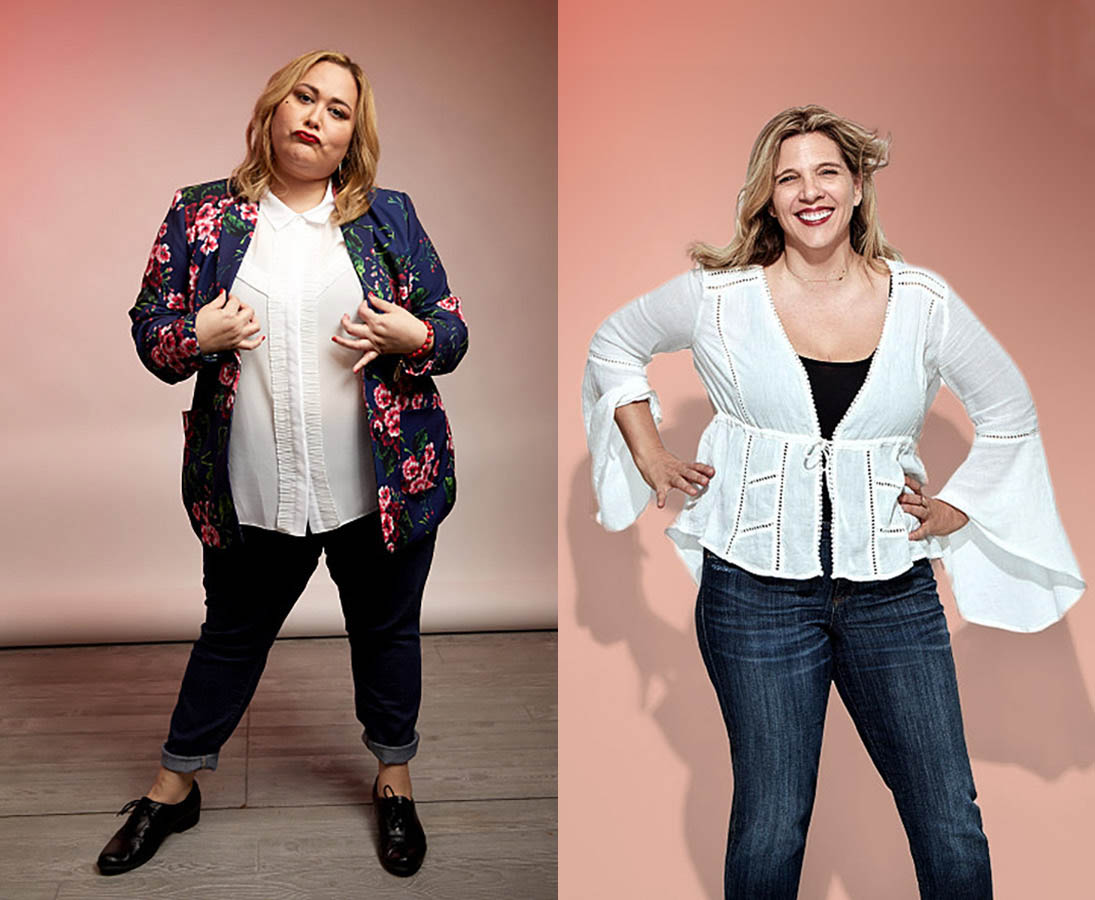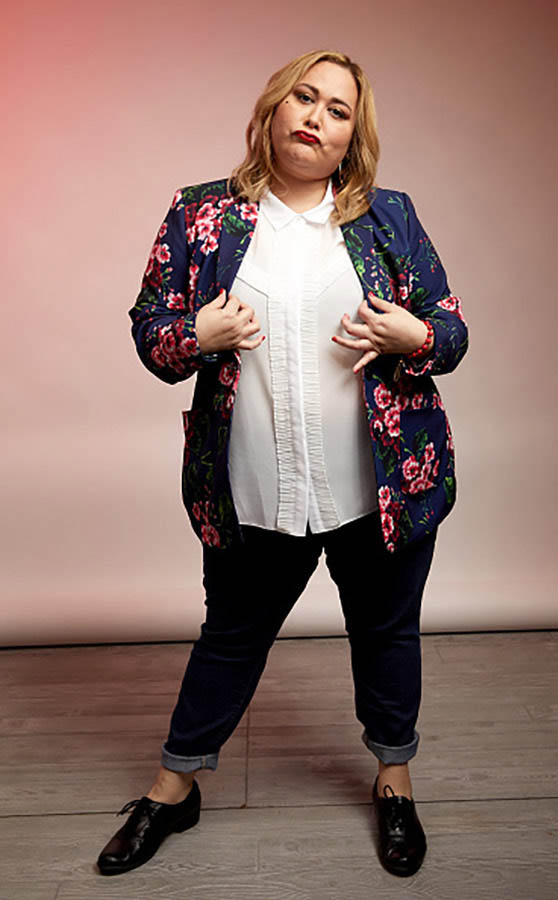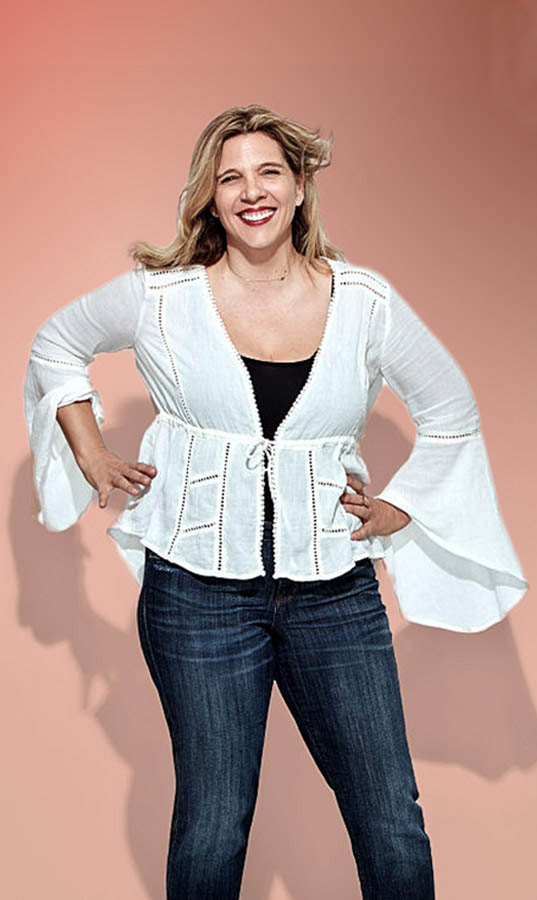Running the Show
In an industry dominated by men, women are changing the culture

By Abigail Cain. Photos by Larsen and Talbert/Getty Images Portrait, Corey Nickols/Getty Images
Running the Show
In an industry dominated by men, women are changing the culture
Tanya Saracho was not even an hour into her first day writing for the Lifetime show Devious Maids when a male coworker looked down at her and said, “You know you’re the diversity hire, right?”
Saracho (’98) had no idea what he was talking about. She called her agent, who explained: most major broadcast networks subsidize one entry-level writer of color for each scripted show. Although it’s meant to foster inclusion in writers’ rooms that are overwhelmingly white and male, these “diversity hires” are rarely hired permanently; showrunners will trade them out for another subsidized writer the next season.
Everyone I hire, I hire with an eye for them to run their own show. I’m nurturing showrunners.
“For the rest of the year that tainted how I spoke, how I pitched, how I had agency in that room,” says Saracho, who was born in Mexico and raised along the Texas border. Although the show followed the lives of four Latina maids in Beverly Hills, Saracho was initially the only Latina writer and one of two women in the room.
Saracho was ready to throw in the towel after Devious Maids, but she agreed to one more meeting, for the HBO series Looking, which first aired in 2014. There, she found herself surrounded by other writers still new to television; the experience was so supportive that “I was like, wait, maybe I do want to do this,” she says.
Since then, she’s risen rapidly through the writers’ room to become the creator and showrunner of Starz’s breakout hit Vida. Following two Mexican American sisters who return to their Los Angeles neighborhood after their mother’s unexpected death, the show deftly and frankly interweaves themes of class, race, and sexuality.
Vida wrapped up its first season in May to enthusiastic reviews (“Life may be too short, but Vida is just right,” wrote the New York Times) and was renewed for a second season. Saracho also signed a three-year deal with Starz to develop new projects—and she’s bringing other women with her.
During the 2016–17 television season, only 19 percent of showrunners were women; AMC, TBS, and TNT had no women at all running their shows. Industry pioneers like Saracho and fellow CFA alums Krista Vernoff (’93), showrunner of Grey’s Anatomy, and Nina Tassler (’79, Hon.’16), founder of PatMa Productions, are changing the way women are represented—both onscreen and off—to ensure that Hollywood is no longer a white man’s world.
What’s a Showrunner, Anyway?
Before moving to Los Angeles, Saracho hardly watched TV. She was busy working as a playwright in Chicago, where, in 2010, she was named “Best New Playwright” by Chicago Magazine and awarded a grant from the National Endowment for the Arts. So, when an agent took her out to lunch in 2011 and suggested she’d be a natural television writer, it took her by surprise.
She wasn’t quite sold on the idea, but took a few meetings in Los Angeles, and “Devious Maids just sort of happened,” she says. Looking came next, followed by Girls and How to Get Away with Murder. In 2016, Starz put out a call for showrunners for a series about “gentefication,” the gentrification of a neighborhood by wealthier Latinx people. Saracho, whose plays tackled racial and socioeconomic divides, was uniquely suited for the subject matter. She answered the call, and Vida was born.
Showrunning may have been new to Saracho, but the term has been in the television lexicon since the early 1990s to describe a particular breed of supercharged executive producer. Previously, creative direction had been controlled by the studios, which hired contract writers to flesh out ideas handed down by higher-ups. Throughout the 1970s and 1980s, shows began offering writers more creative freedom—laying the foundation for the visionary writers/producers who would become the showrunner vanguard: John Wells of ER, David Simon of The Wire, David Chase of The Sopranos, and David Milch of NYPD Blue.
Showrunners are now some of the most formidable figures in entertainment, commanding contracts and industry clout to rival those of powerhouse movie directors. Shonda Rhimes, who helms several small-screen blockbusters including Scandal and How to Get Away with Murder, signed an estimated $100 million deal with Netflix in 2017. In February 2018, Ryan Murphy—of Nip/Tuck and American Horror Story—followed suit when he inked a $300 million contract with the streaming giant, in what’s believed to be the biggest deal in TV history.
Despite the industry prominence of showrunners, most people outside of Hollywood have only a hazy idea of what they do. In short, they are the boss, with the final say on all creative and managerial decisions concerning a television series. Depending on the project, a showrunner’s responsibilities could include developing the concept for a show, hiring cast and crew members, steering a writers’ room, counseling directors, dealing with studio and network executives, and balancing the budget.
“Showrunning, in a way, is a bit like when I was running Teatro Luna,” Saracho says of the all-Latina theater company she founded and led for a decade in Chicago, “except with higher Hollywood stakes.” Rather than Teatro Luna’s $150,000 yearly operating budget, she says, there are “millions of dollars on the line.”
For all its power and prestige, showrunning is a punishing profession. “It is an extremely difficult job. It is extremely time-consuming in a way that I wasn’t quite prepared for,” says Krista Vernoff, showrunner of the hit ABC medical drama Grey’s Anatomy.
As an acting major, Vernoff took a playwriting course with Jon Lipsky, a much-loved professor of playwriting and acting at CFA who passed away in 2011. She found she had a talent not only for performing dialogue, but for writing it.
In the spring of 1998, she moved to Los Angeles with several sample scripts in hand, and was promptly told, “Your writing is really strong, your character work is really strong, but it’s not funny enough.” She realized she was better suited for hour-long dramedies—which fuse elements of comedy and drama into a single show—than half-hour sitcoms and went on to write for Law & Order, the short-lived Wonderfalls, and Charmed. In 2005, she was hired by Rhimes, at the time a fledgling showrunner, to write for the first season of Grey’s Anatomy.
Vernoff went on to write for seven seasons of Grey’s, penning season two’s Emmy-nominated episode “Into You Like a Train.” Although she was credited as “co-showrunner” during that time, she says her role more closely resembled that of a head writer since Rhimes was the one with ultimate creative control. She left ABC in 2011, working as an executive producer for Showtime’s Shameless and serving as showrunner for five pilots that didn’t make it to series.
Then, in 2017, Rhimes handed Vernoff the reins for season 14 of Grey’s. It was her first time showrunning an active show, and she worked 80-hour weeks for months on end. One day, she was so physically worn out that she woke up and couldn’t stand; a doctor had to come to her house and hydrate her with an IV. Vernoff even called up ER’s Wells to make sure she wasn’t doing something wrong. Nope, Wells answered, sounds like a first-year show—which, in some ways, it was.
Breaking Up the Boys’ Club
Before landing at Grey’s, Vernoff spent three years working for WB’s Charmed, where her boss once told her “I bet you’re good in bed” in front of the rest of the writers’ room. She left, despite a major raise, because “the show had gone from being a girl power show to being a ‘How do we get the girls naked this week?’ show. And I as a feminist was really struggling. I have always said I left Charmed because I came in pitching fairies, and I left pitching stripper demons.”
Historically, the writers’ room has often been a deeply uncomfortable place for nonwhite, nonmale writers. According to studies conducted by UCLA and San Diego State University, 67 percent of writers in the 2016–17 television season were men; 86 percent were white. And these trends are even more pronounced among those leading the shows—during the same season, 81 percent of showrunners were men, and 90 percent were white.
The lack of diversity is due in part to a closed feedback loop. Showrunners typically work their way up through a series of writers’ rooms before finally helming their own show. They then tend to hire people who look and sound like them or those they’ve worked with before, and that’s almost always white men.
During an interview with a potential writer, Vernoff says, showrunners have already reviewed the candidate’s résumé and writing samples. What they want to find out during the interview is “if you’re someone they can hang with for 10 hours a day,” she says. More often than not, that translates to someone who makes them comfortable, who has shared life experiences. “One of the things that we’re all talking about now is that we have to be willing to be uncomfortable,” Vernoff says.
Research shows programs with at least one female creator also hire far more women than other shows, and Grey’s and Vida are no exception. Saracho’s writers’ room is staffed with seven women and one man, while Vernoff made a point to hire a male writer last season when her blind read turned up 14 scripts written by women. She also hired people of color for the three open writer slots for season 15, since she’d “inherited a lot of writers who were white,” she says.
At Vida, Saracho’s all-Latinx writers’ room includes Puerto Ricans, Salvadorians, Dominicans, Mexican Americans, and LGTBQ writers. No one is a diversity hire, she says, and no one person is expected to speak for an entire country or culture.
“Hollywood has admitted that there is a major gender problem and that it’s unmanageable. We’ve named it. We’re talking about it, and now we have the power to begin to change it.”
A New Frontier
Since Harvey Weinstein’s alleged sexual abuse went public in 2017, Hollywood has become a hub for conversations about power and representation and a locus for the #MeToo and Time’s Up movements. More than 1,000 women in the entertainment industry—including Uzo Aduba (’05), Geena Davis (’79, Hon.’99), Julianne Moore (’83), Marisa Tomei (’86, Hon.’02), and Alfre Woodard (’74, Hon.’04)—signed the Time’s Up open letter published by the New York Times in January 2018, which called attention to the misogynist work environments faced by women in all walks of life. Vernoff herself has written several articles for the Hollywood Reporter, speaking out about her experiences in the television industry, including the sexist behavior she encountered while working on Charmed.
Women showrunners are not just waiting for change to come from the top down—they’re changing the culture from the inside. “Everyone I hire, I hire with an eye for them to run their own show,” Saracho says. “I’m nurturing showrunners.” There are eight Latinx showrunners across the entire television industry, she says, and “that’s not enough. That’s not even one percent. We have to make more.” To bring her writers up the ladder along with her, she often recruits them to participate in projects outside the writers’ room, like interviewing script coordinators.
Nina Tassler is thinking even bigger. As the head of CBS Entertainment for 11 years, she made it her mission to provide more opportunities to women in television, both as executives and as showrunners. But it shouldn’t stop there, she says.
“I think it’s important that you encourage women to be not only showrunners, but also to be in an overseeing capacity, to have multiple projects on the air at one time,” says Tassler, who left CBS in 2015 to start her own company, PatMa Productions, which employs women and people of color, specifically. “Can we find more opportunities for women directors? Can we find more opportunities for women casting directors? Can we find more opportunities for female line producers?” she asks. “We’re looking to populate as much of our work as possible with female voices, leadership, creators, storytellers.”
For her part, Vernoff is optimistic. “We are becoming more and more comfortable telling the truth,” she says. “And until you’ve named a problem and spoken the truth you cannot fix it. Hollywood has admitted that there is a major gender problem and that it’s unmanageable. We’ve named it. We’re talking about it, and now we have the power to begin to change it.”

